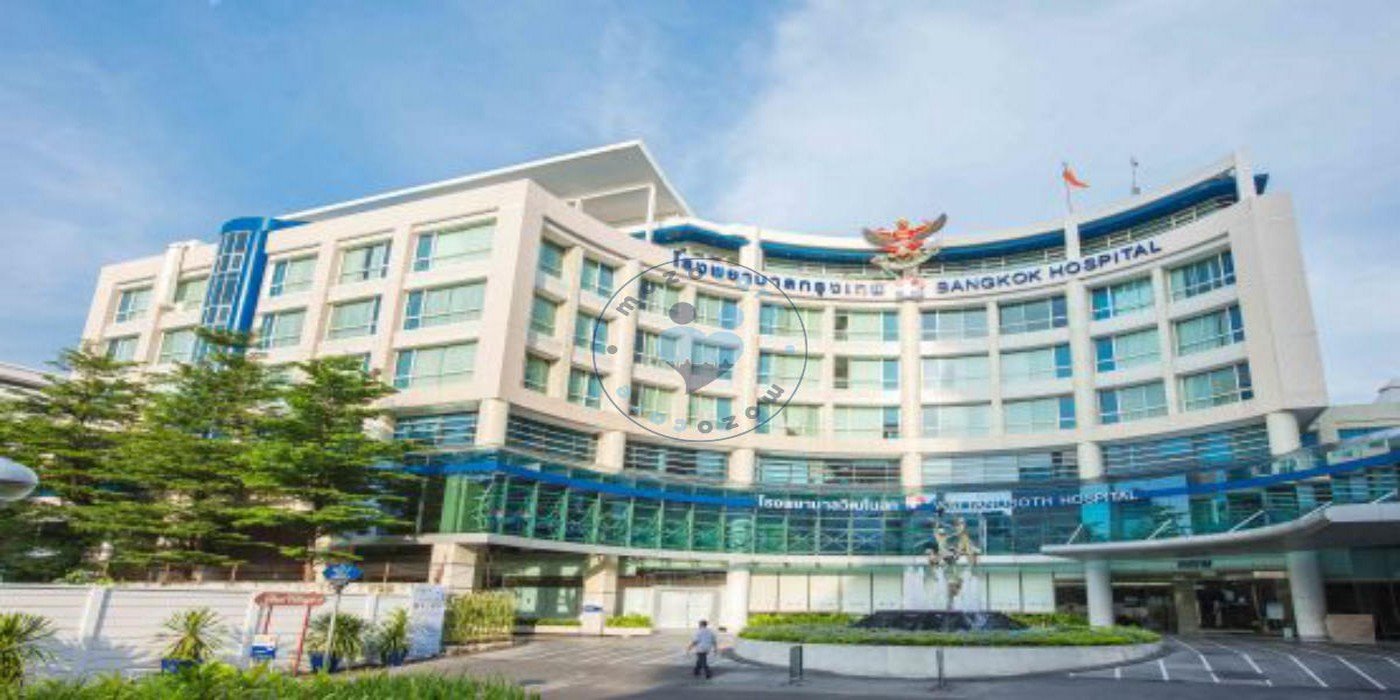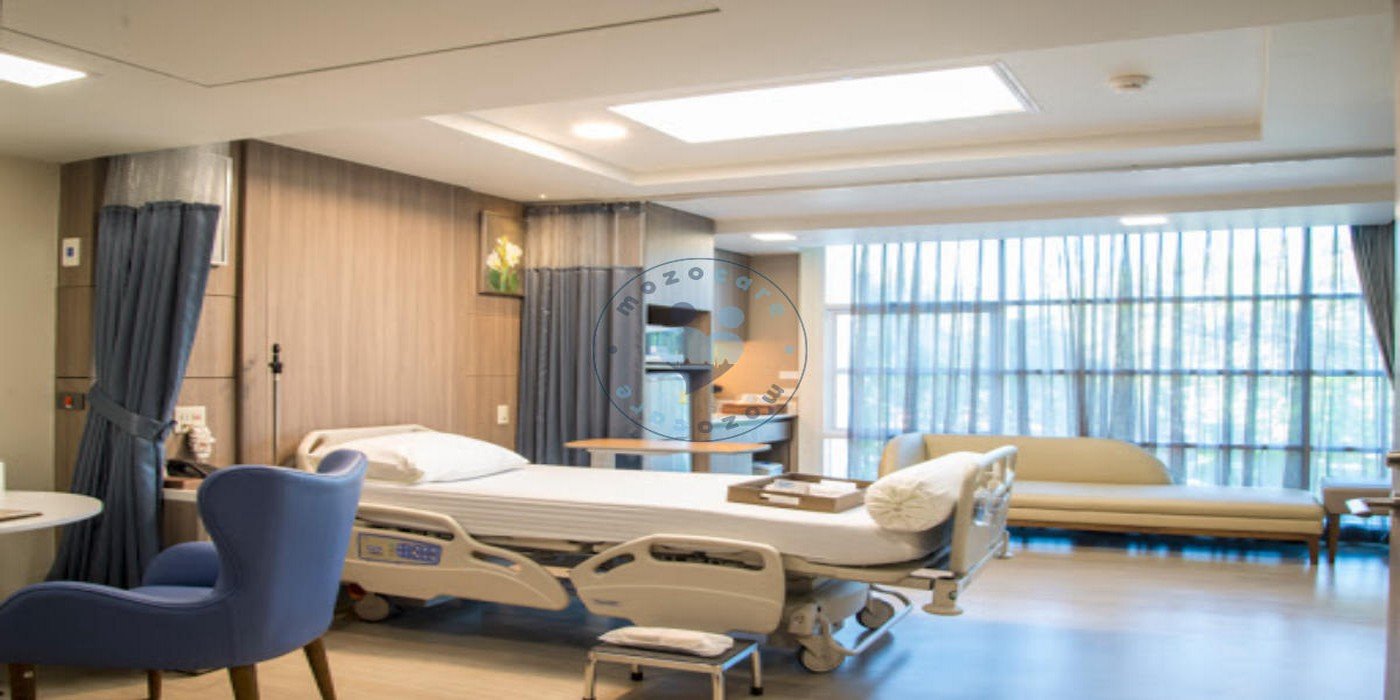Bangkok, Thailand




740 procedures across 17 specialities
Allergy testing, also known as skin, prick, or blood testing is performed by a trained allergy specialist to determine if your body has an allergic reaction to a known substance. The exam can be in the form of a blood test, a skin test, or an elimination diet. Allergies occur when your immune system, which is your body’s natural defense, overreacts to something in your environment. Allergy testing can determine which particular pollens, molds, or other substances you’re aller
Learn more about Allergy TestingEchocardiogram procedure abroad Echocardiogram or Echocardiography is a test that uses sound waves to assess the heart by creating 2-dimensional and 3-dimensional images of the heart. It is a diagnostic test performed to detect any complications with the heart valves and chambers. The image of echocardiography is called an echocardiogram. It is key in determining the heart of the heart muscle . An echocardiogram is a painless test and considered very safe. The test does not use any
Learn more about EchocardiogramElectrocardiogram (ECG or EKG) treatments abroad An electrocardiogram (ECG or EKG) is an examination that detects how your heart is functioning by determining the electrical activity of the heart. With every heartbeat, an electrical impulse travels through your heart. The wave causes the muscle to squeeze and propel blood from the heart. The electrical activity of the heart is then computed, analyzed, and printed out. No electricity is sent into the body. An EKG will help your doctor under
Learn more about Electrocardiogram (ECG or EKG)Coronary Artery Bypass Graft (CABG) Surgery treatments abroad Coronary artery disease (CAD) is one of the most common heart disease conditions and happens when cholesterol and other materials build up in the artery walls, narrowing the artery and reducing the blood supply to the heart. This leads to chest pain and in the worse cases to a stroke, which can damage the patient life quality or have even more serious consequences. One way to treat this condition is to provide the blood a new way
Learn more about Coronary Artery Bypass Graft (CABG) Surgery12 View all 102 procedures 12 View less Procedures
Bone Graft treatments abroad Dental implants are a reliable and safe method of replacing missing or damaged teeth. There are cases, however, where the surrounding bone structure of the jaw is not sufficiently strong enough to support dental implants. Both the volume and quality of supporting bone is vital in the successful application of dental implants. If not enough bone is available, or if the bone is affected by conditions such as periodontal disease or trauma, then a dental Bone Graft ma
Learn more about Bone GraftDental Crown treatments abroad Mozocare is a platform which simplifies the process of finding dental care around the world . Is searching for relevant dental procedures long and tiresome? From wisdom tooth extraction to veneers, Mozocare listed clinics offer an extensive range of dental treatments. Recent trends in medical tourism have seen clinics in countries such as Poland and Hungary become prime locations for affordable dental treatment - Mozocare brings these clinics together on one eas
Learn more about Dental CrownDental Bridge treatments abroad What is a dental bridge? Much like dental implants , a bridge is a dental restoration used to replace a missing tooth and/or teeth. A bridge uses abutment teeth to anchor false teeth to the existing jaw and tooth structure. Dental bridges can be formed from a variety of materials, predominantly: porcelain, composite resin, gold, alloy, metal, or a combination . When do I need a dental bridge? When a tooth is missing it causes the surrounding teeth t
Learn more about Dental Bridge12 View all 72 procedures 12 View less Procedures
Bone-Anchored Hearing Aid (BAHA) treatments abroad,
Learn more about Bone-Anchored Hearing Aid (BAHA)Cochlear Implant treatments abroad What Are Cochlear Implants? A cochlear implant is a device surgically-implanted both inside the ear of the patient and outside the ear, with a part of the device magnetically attaching outside of the patient's skull. Like a sophisticated hearing aid, the device is able to partially restore functional speech comprehension in patients with profound or total hearing loss, as well as other aspects of hearing. While the full range of sound is not resto
Learn more about Cochlear ImplantLaryngectomy treatments abroad,
Learn more about Laryngectomy12 View all 46 procedures 12 View less Procedures
Find Cholecystectomy abroad
Learn more about CholecystectomyFind Colonoscopy abroad A colonoscopy is the examination of the colon (large intestine and bowel) with a video camera which is attached to a flexible tube with a light at the tip, and is passed through the anus. A colonoscopy helps to locate ulcers, tumors, polyps, and areas of inflammation. It also allows for tissue samples (biopsies) to be collected which can then be later tested as well as the opportunity to remove any abnormal growths. Colonoscopies are also used to screen for precancero
Learn more about ColonoscopyFind Polypectomy abroad,
Learn more about Polypectomy12 View all 43 procedures 12 View less Procedures
A laparoscopy is a minimally invasive surgical procedure performed to examine the abdomen to help make a diagnosis, take a tissue biopsy, or to make surgical repairs. It is a modern surgical technique that involves making small incisions in the abdomen, through which a laparoscope is inserted. A laparoscope is a flexible tube which is fitted with a light and camera which transmits images of the inside of the abdomen to a computer which the surgeon can view. for more details about Laparoscopic su
Learn more about LaparoscopyFind Mastectomy abroad with mozocare,
Learn more about MastectomyFind Nephrectomy abroad with mozocare,
Learn more about Nephrectomy12 View all 31 procedures 12 View less Procedures
Find Hysterectomy abroad with Mozocare Hysterectomy abroad A hysterectomy is the surgical removal of the uterus and, in some cases, the cervix. There are several techniques that can be involved and the patient should consult with their doctor about the best options for them, as all carry different risks and advantages. In some cases, robotic or laparoscopic surgery is the best option, while in other cases the surgeon may opt to remove the uterus through the vaginal opening. There are many reason
Learn more about HysterectomyFind Internal Medicine Consultation abroad with Mozocare,
Learn more about Internal Medicine ConsultationEpilepsy Treatment treatments abroad Epilepsy treatment refers to a clinical treatment where the tiny part of the brain which creates seizures, is eliminated using a little electrical device that is put in the body. A variety of reasons may lead to seizures for which Anti-epileptic drugs (AEDs) are given to control seizures. This disease may occur in childhood or after age 60 The symptoms of this disease differ from person to person. An electroencephalogram (EEG) helps to diagnose epilepsy.
Learn more about Epilepsy TreatmentMultiple Sclerosis (MS) Management treatments abroad Multiple sclerosis, which is an autoimmune condition, affects the brain and spinal cord, thus causing numerous prodromes such as problems with vision, arm or leg movement, sensation, or balance. It can cause serious disability sometimes. Multiple Sclerosis can be diagnosed with the help of blood tests and MRI. In extreme cases of MS, certain complications are there like chest or bladder infections, or swallowing difficulties. Exercise, medi
Learn more about Multiple Sclerosis (MS) ManagementNeurology Consultation treatments abroad Neurology consultation is the main activity of neurology teams and it includes diagnosis and follow-up of all neurological diseases and then deciding appropriate diagnostic and therapeutic approaches for each case. At Mozocare, we have highly qualified and experienced neurologists. What are the general objectives of neurology consultation? To diagnose any neurological disease. To establish a complementary investigation plan to determine the
Learn more about Neurology Consultation12 View all 22 procedures 12 View less Procedures
Brain Aneurysm Repair Abroad It is a surgery to treat a weak area in the blood vessel wall which leads to a bulge or burst of the vessel which can cause bleeding into the cerebrospinal fluid (CSF) and brain that forms a collection of blood. Symptoms being behavior change, speech problems, numbness, vision problems, loss of coordination, muscle weakness, etc. Diagnostic tests are Cerebrospinal fluid test, CT, MRI, Cerebral angiogram, and X-ray. Treatment for the disease can be aneurysm clippin
Learn more about Brain Aneurysm RepairNeurosurgery Consultation abroad Neurosurgery is the branch of medicine related to the diagnosis and treatment of disorders of the brain, spinal cord, and peripheral nerves within the body. Neurosurgeons are specialists who specialize in neurosurgeries to treat these disorders. Consultation with the neurosurgeons provides the diagnosis, evaluation, treatment, prevention, critical care, etc. The doctor talks about the treatment plan and educates about the benefits and the risks of that treatme
Learn more about Neurosurgery ConsultationSkull Base Surgery Abroad A surgical treatment to remove a tumor or any cancerous growth at the bottom of the skull is referred to as skull base surgery. Symptoms are facial pain, headache, numbness, hearing loss, ringing in ears, weakness of the face, etc. Diagnostic tests are endoscopy, CT scan, MRI, MRA, PET scan, and biopsy. Treatment for the disease can be minimally invasive surgery, open surgery, chemotherapy, radiation therapy, gamma knife, proton beam therapy, and particle therap
Learn more about Skull Base Surgery12 View all 26 procedures 12 View less Procedures
Whipple Procedure treatments abroad,
Learn more about Whipple ProcedureBrachytherapy treatments abroad,
Learn more about BrachytherapyChronic Leukemia Treatment treatments abroad Leukemia can be defined as a malignant disease of the blood and bone marrow and is associated with abnormalities in the development and functioning of blood cells. Some leukemia types affect children more often while other are only found in adults. Leukemia can be divided into two subcategories according to the blood cell type: chronic and acute leukemia. Chronic leukemia can be myelogenous or lymphocytic. The main difference between acute and chro
Learn more about Chronic Leukemia Treatment12 View all 111 procedures 12 View less Procedures
Vitrectomy abroad Vitrectomy surgery focuses on the middle of the eye in order to remove the vitreous gel from the eye. This may be achieved in the event of a retinal detachment. It also involves the removal of vitreous gel which enables the eye doctor, or ophthalmologist, much better access to the back of the eye. The vitreous gel can also be removed if blood in the result of a vitreous hemorrhage occurs due to the vitreous gel not clearing on its own. \The procedure involves the surgeon
Learn more about VitrectomyArtificial Iris Implantation abroad Artificial iris implants are only recommended for medical reasons. Iris implants are not recommended as a way to change eye color, as the risks of the procedure outweigh the benefits Artificial iris implants can be used to correct aniridia, or the absence of an iris. Aniridia can be caused by genetic abnormality or by an injury to the eye. Some types of implants can also be cut into pieces to restore partial aniridia using the least artificial materials pos
Learn more about Artificial Iris ImplantationEye Examination abroad Eye examinations test a number of factors for Ophthalmologic health, including visual acuity and screening for a number of diseases. Eye examinations can also be the first step toward corrective eye surgeries such as LASIK, LASEK, and PRK. In many cases, an exam will be free with the cost of surgery. In many cases, eye examinations can detect the early stages or signs of disease, which may lead to further testing and treatment that can stop its progression. Eye exams
Learn more about Eye Examination12 View all 63 procedures 12 View less Procedures
Hip Arthroscopy abroad A hip arthroscopy is a minimally invasive procedure that allows doctors too see hip joint in the absence of making a slit through skin and tissues. it is used to determine and treat a wide range of problems related to hip. This procedure does not require large incisions. An arthroscope (a small camera) is inserted into the hip joint and with the help of the images received on the monitor, the surgeon guide the miniature surgical instrument. This helps in diagnosing the
Learn more about Hip ArthroscopyHip Replacement abroad Hip Replacement abroad, A hip replacement involves replacing the natural hip joint that is not functional anymore and causes pain, with a prosthetic implant. Total hip joint replacement means that the end of the femur (thigh bone), cartilage, and hip socket are replaced to create new joint surfaces. Hip replacements are carried out to improve quality of life, relieving chronic pain caused by hip conditions, and improving hip mobility. Hip replacements are usually used
Learn more about Hip ReplacementKnee Arthroscopy abroad Knee Arthroscopy abroad In the strictest sense, knee arthroscopy involves the insertion of a camera (called arthroscopic camera) into a small incision in the knee so that the surgeon can examine different parts of the knee from the inside and repair or diagnose different conditions. The surgeon may insert other tools through other openings to repair or remove things from within the knee. Arthroscopic surgery may be an option for patients with several different conditi
Learn more about Knee Arthroscopy12 View all 129 procedures 12 View less Procedures
Physical Therapy abroad,
Learn more about Physical TherapyPhysical Therapy Consultation abroad,
Learn more about Physical Therapy ConsultationOrthopedic Rehabilitation abroad,
Learn more about Orthopedic Rehabilitation12 View all 42 procedures 12 View less Procedures
Find Breast Lift abroad with Mozocare What is Breast Lift Surgery? Breast lift surgery, also known as a mastopexy, is a surgical procedure whereby the size and contour of the breasts are corrected and modified in addition to elevating the breasts to eradicate sagging. The aim of the surgery is to tighten and lift the breast, making them proportionate. In order to achieve this, excess tissue is cut and removed and the nipple is usually repositioned so that it rests higher on the breast. A
Learn more about Breast LiftFind Breast Reduction abroad with Mozocare What is Breast Reduction Surgery? Breast reduction surgery (which is also known as reduction mammoplasty or reduction mammaplasty) is a procedure that involves removing some tissue and skin to reshape and reduce the size of the breasts. Breast reduction surgery can be used for aesthetic reasons, or to treat medical conditions caused by large breasts. One reason for having breast reduction surgery is to feel more comfortable in day-to-day lif
Learn more about Breast ReductionFind Facelift abroad with Mozocare What is a facelift? A facelift (officially known as rhytidectomy) is a plastic and cosmetic procedure used to give an appearance of youthfulness to the face, removing or smoothing out the wrinkles and creases that make the face look aged and worn. As skin ages it loses its firmness and elasticity, resulting in sagging skin around the neck and jawline that many people find unappealing. In this case a facelift can reverse this process, tightening loose skin
Learn more about Facelift12 View all 13 procedures 12 View less Procedures
Pulmonology Consultation abroad You should consult a pulmonologist if you are coughing persistently, have difficulty breathing, cough up blood, experiencing unexplained weight loss, and short of breath. Your visit to the Center will include a detailed medical history, physical exam, and possible testing to determine a diagnosis. Which other Pulmonary & Respiratory procedures can I find abroad? There are many accredited and modern hospitals providing high standard Pulmonary & Res
Learn more about Pulmonology ConsultationLung Biopsy abroad A lung biopsy is a process in which samples of lung tissue are removed to detect the presence of lung disease. It may be performed using either a closed or an open method. A lung biopsy procedure is sometimes necessary to help diagnose a condition, usually cancer. How much does Lung Biopsy cost abroad? The cost of Lung Biopsy ranges between USD 1600- USD 2800. Which other Pulmonary & Respiratory procedures can I find abroad? There are many accredited and mod
Learn more about Lung BiopsyRespiratory Medicine Consultation abroad Doctors in respiratory medicine diagnose and treat conditions affecting the respiratory (breathing) system, i.e. the nose, throat (pharynx), larynx, the windpipe (trachea), the lungs and the diaphragm. Once all your test results are in and have been analysed, the pulmonologist will arrange another consultation to discuss your results and to work with you to devise a treatment plan. Which other Pulmonary & Respiratory procedures can I find
Learn more about Respiratory Medicine Consultation12 View all 15 procedures 12 View less Procedures
Massage abroad,
Learn more about MassageDetoxification, commonly known as detox, is the process of removing harmful substances from the body. The process of detoxification is essential for those struggling with addiction, substance abuse, alcoholism, or drug addiction. Detoxification helps in clearing the body of drugs or alcohol and helps individuals recover from addiction. Detoxification is the first step in the addiction treatment process and is vital for a successful recovery. Detox treatment abroad is becoming increasingly pop
Learn more about Detox TreatmentColonic Irrigation abroad,
Learn more about Colonic Irrigation12 View all 22 procedures 12 View less Procedures

International Standards Organization (ISO 9000)
New Petchaburi Rd, Bang Kapi, Huai Khwang, Bangkok 10310, Thailand
| # | Hospital | Country | City |
|---|---|---|---|
| 1 | Bumrungrad International Hospital | Thailand | Bangkok |
| 2 | Mission Hospital | Thailand | Bangkok |
| 3 | Sikarin Hospital | Thailand | Bangkok |
| 4 | Vejthani Hospital | Thailand | Bangkok |
| 5 | Thainakarin Hospital | Thailand | Bangkok |
Search Procedure and Hospital
Choose your Options
Book your program
You are ready for a new and healthier life
Mozocare is a medical access platform for hospitals and clinics to assist patients access best medical care at affordable prices. Mozocare Insights provides Health News, Latest treatment innovation, Hospital ranking , Healthcare Industry Information and Knowledge sharing .
The information on this page was reviewed and approved by Mozocare team. This page was updated on 17 May, 2021.